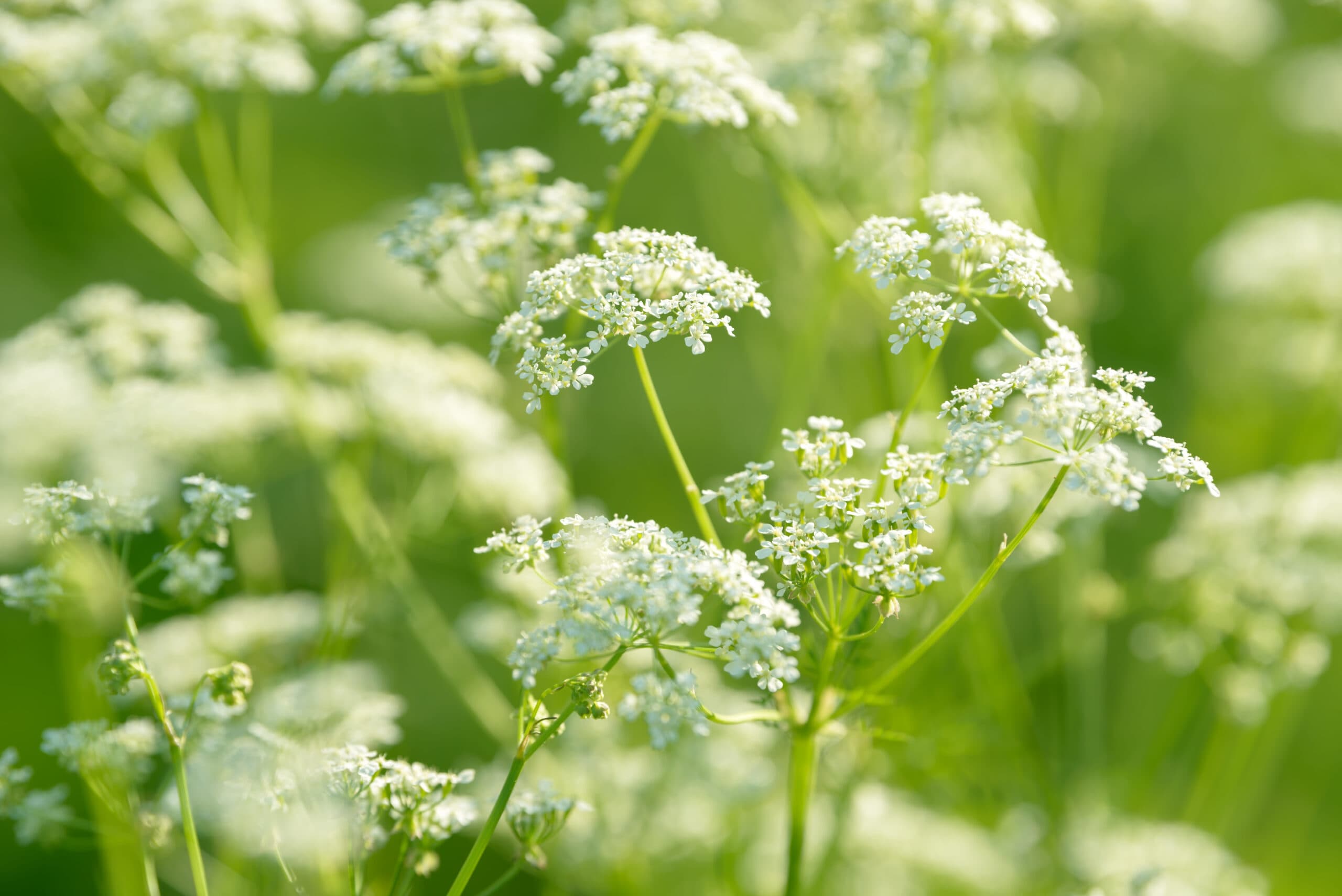
Scientific Name
Pimpinella anisum
Common Names
Anise, Aniseed
Plant Family
Apiaceae
Location
Native to the eastern Mediterranean and Southwest Asia. Now cultivated in southern Europe, the Middle East, and North Africa. Anise prefers full sun and well-drained, light soil. It needs a long, warm growing season and doesn’t tolerate frost well.
Description
An annual herb that resembles dill or fennel in its early growth, with feathery, finely cut leaves and upright hollow stems. It grows up to 2 feet tall. In midsummer, it produces small white flowers in flat-topped umbels that mature into small, curved, aromatic fruits (commonly referred to as seeds). The scent is unmistakably sweet, licorice-like, and warming.
Uses
Prized as a carminative and digestive aid: it helps to relieve bloating, gas, indigestion, and flatulence, soothing spasmodic gut discomfort. Its warming, aromatic seed oil also offers antispasmodic relief for gastrointestinal cramps and can ease nausea. Anise demonstrates notable anti-inflammatory and analgesic effects, reducing pain and swelling in various contexts; it is also used traditionally to comfort sore throats, coughs, and respiratory congestion. On the antimicrobial front, anise has shown antibacterial and antifungal activity in vitro (including against dermatophytes and yeasts), which supports its use for infections and as a disinfectant. Furthermore, it is used as an expectorant in coughs and colds, aiding expectoration of mucus. In women’s health, anise has been used traditionally as a galactagogue (to increase milk production), and to ease menstrual discomfort. Taste and aroma aside, its volatile components also exhibit antioxidant activity, protecting tissues from oxidative stress. Altogether, anise is a gentle yet versatile herb useful for digestive, respiratory, female reproductive, and infectious-type ailments.
Energetics
Warming, sweet, moistening. Moves stagnant digestion, relaxes spasms, and adds softness to formulas. Slightly aromatic and dispersive.
Parts Used
Seed (technically the dried fruit)
Constituents
Anethole (primary volatile oil), estragole, limonene, coumarins, flavonoids. These aromatic oils give it its digestive and antispasmodic properties.
Dosage
- Tea: 1 tsp freshly crushed seeds per cup, steep 10–15 minutes.
- Tincture (1:5, 40% alcohol): 20–40 drops as needed, especially before or after meals.
- Powder: ¼ tsp mixed with honey or warm water for gas or indigestion.
Notes on Use
Anise is gentle but effective. Use it in digestive formulas for people of all ages, from babies to elders. It combines beautifully with fennel and chamomile to soothe tension in the belly. Its sweetness makes it a great flavor-balancer in bitter blends or immune teas. Energetically, it feels joyful and comforting — good for those who carry emotional stress in the gut.
Harvesting
• Seed: Harvest when seed heads turn brown and fragrant. Cut the whole umbel and hang upside down in paper bags to catch seeds as they dry.
• Use fresh for highest oil content or store in airtight containers out of light and heat.
Contraindications
Generally safe in culinary amounts. Use cautiously in high doses with hormone-sensitive conditions. Rare allergic reactions in some individuals.
Recipes
- Belly Tea: Anise, fennel, chamomile — calming and gently sweet
- Lactation Support: Anise, fenugreek, nettle
- Spiced Honey Syrup for Cough: Anise seed, licorice, ginger in honey